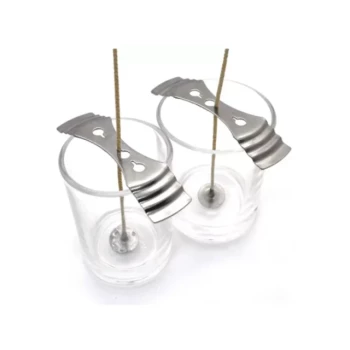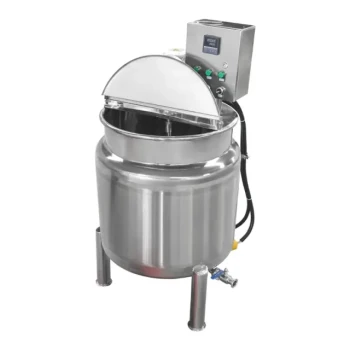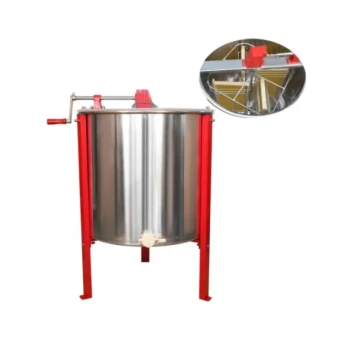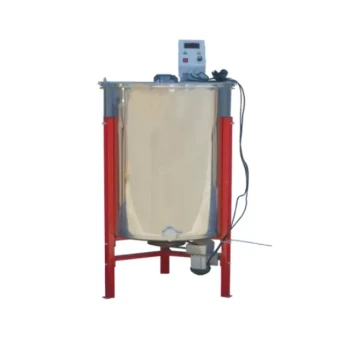The primary benefits of beeswax for candle making are its natural, non-toxic properties and superior performance. Unlike paraffin candles, which can release harmful chemicals, beeswax burns cleaner, longer, and brighter, while also acting as a natural air purifier.
While beeswax is widely recognized for its health and environmental advantages, its true value lies in its unique physical properties. Understanding how to manage its high melting point is the key to creating a safe, long-lasting, and beautiful candle.
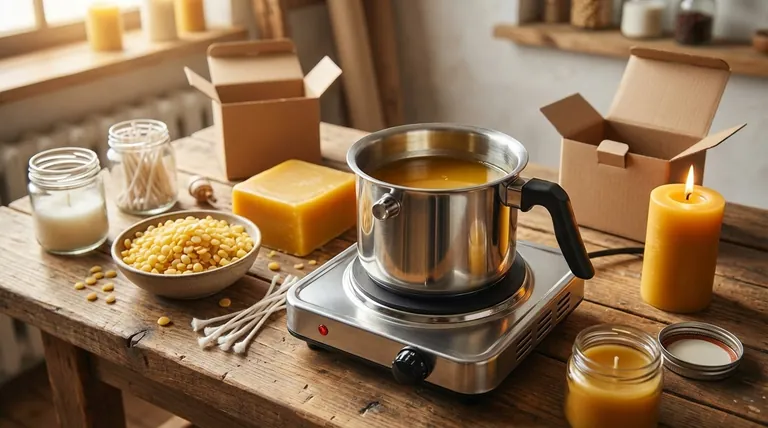
The Intrinsic Advantages of Beeswax
Beeswax isn't just a container for a flame; it's an active component that enhances the candle's performance and the surrounding environment.
A Natural and Renewable Source
Beeswax is a completely natural and renewable resource, created by honeybees. It is a byproduct of the honey harvesting process, making it an environmentally sound choice.
By using beeswax, you are utilizing a material that requires no industrial processing to create, unlike petroleum-based paraffin waxes.
Superior Burn Quality
Beeswax candles are known for their exceptional burn characteristics. They burn longer and cleaner than many other types of wax.
Because of its higher melting point (around 147°F), the wax is consumed more slowly. This results in a smokeless, dripless burn that produces a bright, vibrant light often compared to natural sunlight.
A Healthier Home Environment
One of the most significant benefits is improved air quality. When burned, beeswax candles produce negative ions that help neutralize pollutants in the air.
These ions bind with common allergens like dust, pollen, and dander, removing them from the air. This makes beeswax candles an excellent choice for individuals with allergies or asthma.
Practical Considerations for the Candle Maker
Beyond its performance, beeswax presents several practical benefits and considerations for anyone looking to make their own candles.
Full Control Over Ingredients
Making your own beeswax candles ensures you know exactly what is in your product. You can avoid the synthetic fragrances, dyes, and chemical additives often found in store-bought candles.
This allows you to create a truly non-toxic and pure candle for your home.
Sourcing and Purity
You can source beeswax directly from local beekeepers or purchase it in bars, pellets, or pastilles from craft stores.
For a candle to burn properly, the beeswax must be clean. Commercially prepared wax is typically pre-cleaned, but raw wax will need to be filtered to remove impurities that can clog the wick.
Understanding the Trade-offs and Safety
The unique properties of beeswax also introduce specific challenges that require careful management. Acknowledging these is crucial for success and safety.
The High Melting Point Challenge
While a high melting point contributes to a longer burn, it also means the wax burns hotter. This can cause small glass containers to overheat and potentially crack.
Pure beeswax is often better suited for pillar candles or containers specifically rated for high temperatures.
The Solution: Blending Waxes
To mitigate the risk of overheating containers, you can blend beeswax with other natural oils or waxes.
Adding a softer oil like coconut oil or a wax like soy wax lowers the overall melting temperature. This creates a smoother burning candle that is safer for use in a wider variety of glass jars.
Critical Safety Measures
Beeswax is flammable and can ignite if heated to approximately 400°F. Never melt it over direct heat or in a microwave.
Always use a double boiler for a slow, steady, and controlled melt. Supervise the process at all times and never leave a burning candle unattended.
How to Apply This to Your Project
Your specific goal will determine the best way to approach working with beeswax.
- If your primary focus is air purity and a non-toxic burn: Use 100% pure, clean beeswax in a pillar mold or a robust, heat-safe container.
- If your primary focus is the longest possible burn time: Stick with pure beeswax, as its high melting point is what provides superior longevity.
- If your primary focus is making scented candles in glass jars: Create a blend of beeswax with coconut oil or soy wax to lower the melting temperature and ensure container safety.
Choosing beeswax empowers you to create a high-quality, natural product that outperforms common alternatives.
Summary Table:
| Benefit | Key Takeaway |
|---|---|
| Burn Quality | Burns longer, cleaner, and brighter than paraffin. |
| Health & Environment | Natural air purifier; non-toxic and renewable. |
| Safety Consideration | High melting point requires heat-safe containers or blending. |
Ready to create superior, natural candles? HONESTBEE supplies high-quality beeswax and professional beekeeping equipment to commercial apiaries and distributors. Our wholesale-focused operations ensure you get the pure materials needed for safe, high-performance candle making. Contact our experts today to discuss your supply needs!
Visual Guide
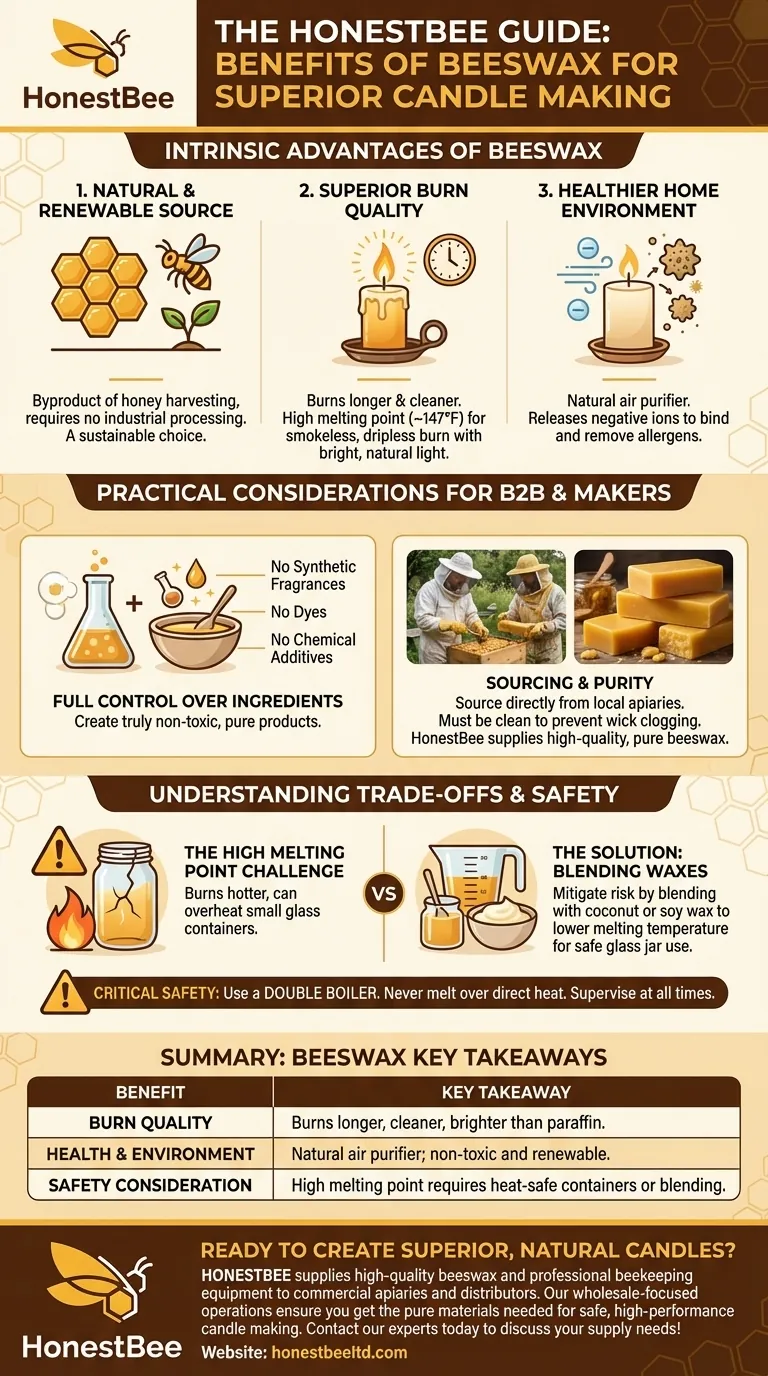
Related Products
- Beeswax Melter for Candle Making Honey Bee Wax Melter
- Metal Wick Holder Centering Devices for DIY Candle Making Candle Wick Holder
- Stainless Steel Manual Honey Press with Guard for Pressing Honey and Wax
- Assembled Wooden Bee Frames with Beeswax Foundation Ready to Use by HONESTBEE
- Professional 500g Sectional Comb Honey Frame System for Beekeeping
People Also Ask
- What do you use a wax melter for? From Home Fragrance to Professional Beekeeping
- What is the recommended temperature range for melting beeswax? Achieve Perfect Quality & Safety
- What are the main types of wax melters? Choose the Right Heating Method for Your Needs
- How do water jacket melters function? Achieve Gentle, Scorch-Free Melting for Sensitive Materials
- What are the primary products of honey bee farming besides honey? Discover the Hive's Hidden Treasures

